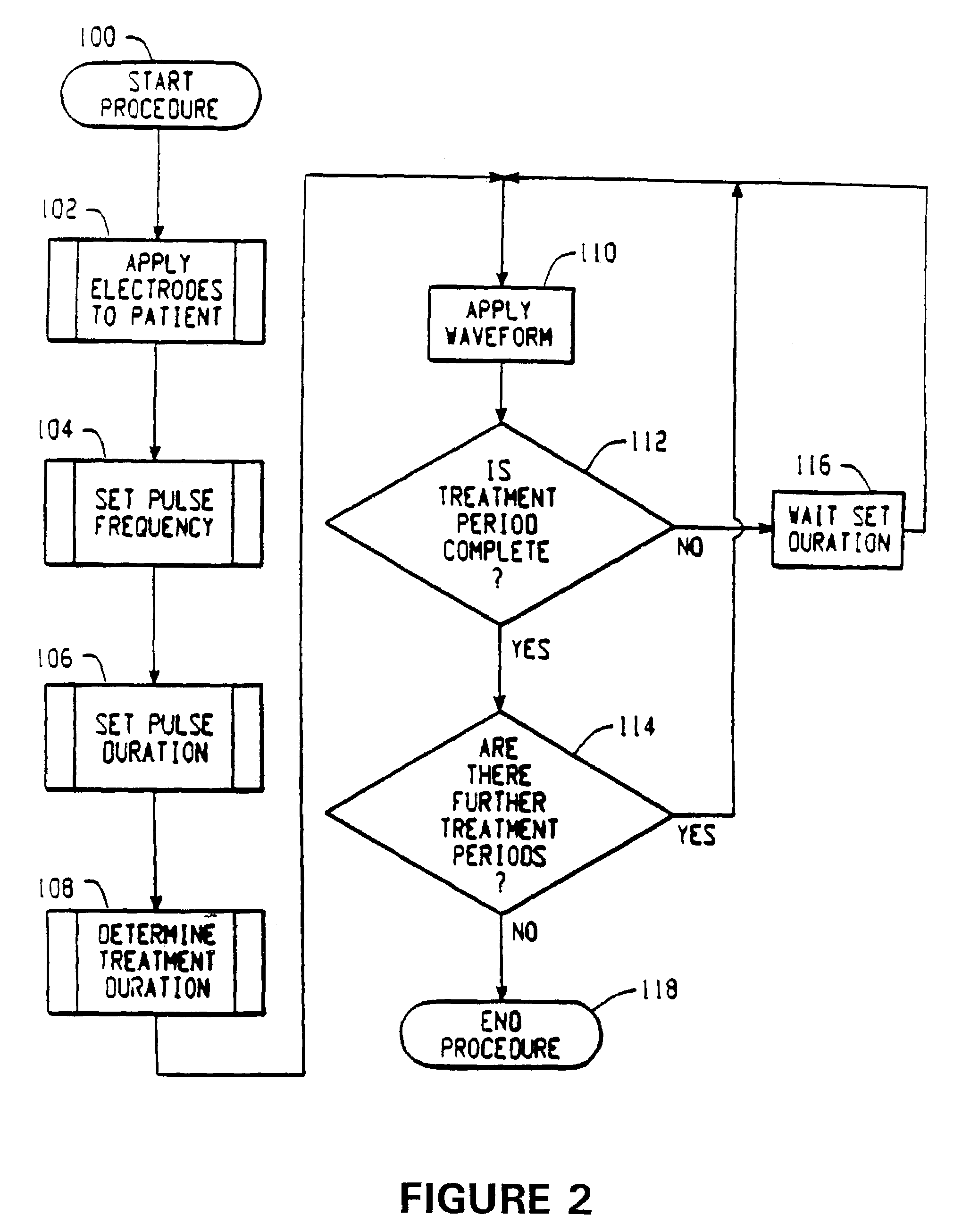Method and apparatus for treating oropharyngeal disorders with electrical stimulation
an oropharyngeal disorder and electrical stimulation technology, applied in the field of effective treatment of oropharyngeal disorders, can solve the problems of inability to swallow or difficulty in swallowing, lack of adequate swallowing reflex, and patient endure weeks or months of therapy, and achieve the effect of simple, non-invasive, and promoting swallowing
- Summary
- Abstract
- Description
- Claims
- Application Information
AI Technical Summary
Benefits of technology
Problems solved by technology
Method used
Image
Examples
example 1
[0093]One hundred and ninety-five patients suffering from dysphagia as a result of a stroke or neurodegeneration were studied. The swallowing ability of each patient was evaluated to determine the extent and type of dysphagia exhibited by the patient. The swallowing ability of each patient was assigned a number which corresponds to a defined swallow state wherein the swallow states are listed below:[0094]swallow state zero is the inability to have a pharyngeal contraction;[0095]swallow state one is the ability to swallow one's own secretions;[0096]swallow state two is the ability to swallow paste, pudding, or similar substances;[0097]swallow state three is the ability to swallow honey or similar substances;[0098]swallow state four is the ability to swallow nectar or similar substances;[0099]swallow state five is the ability to swallow liquids; and[0100]swallow state six is the ability to swallow water.
[0101]All of the patients were determined to have swallowing states of either zero...
PUM
 Login to View More
Login to View More Abstract
Description
Claims
Application Information
 Login to View More
Login to View More - R&D
- Intellectual Property
- Life Sciences
- Materials
- Tech Scout
- Unparalleled Data Quality
- Higher Quality Content
- 60% Fewer Hallucinations
Browse by: Latest US Patents, China's latest patents, Technical Efficacy Thesaurus, Application Domain, Technology Topic, Popular Technical Reports.
© 2025 PatSnap. All rights reserved.Legal|Privacy policy|Modern Slavery Act Transparency Statement|Sitemap|About US| Contact US: help@patsnap.com



